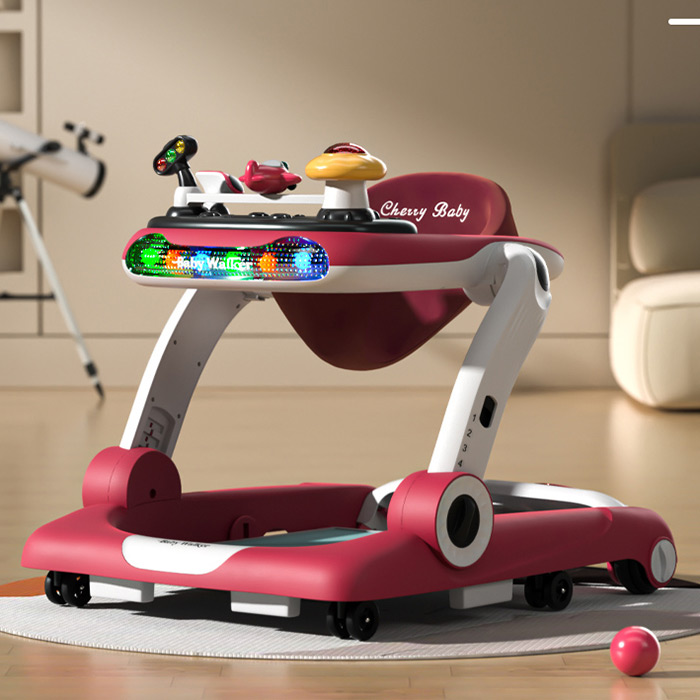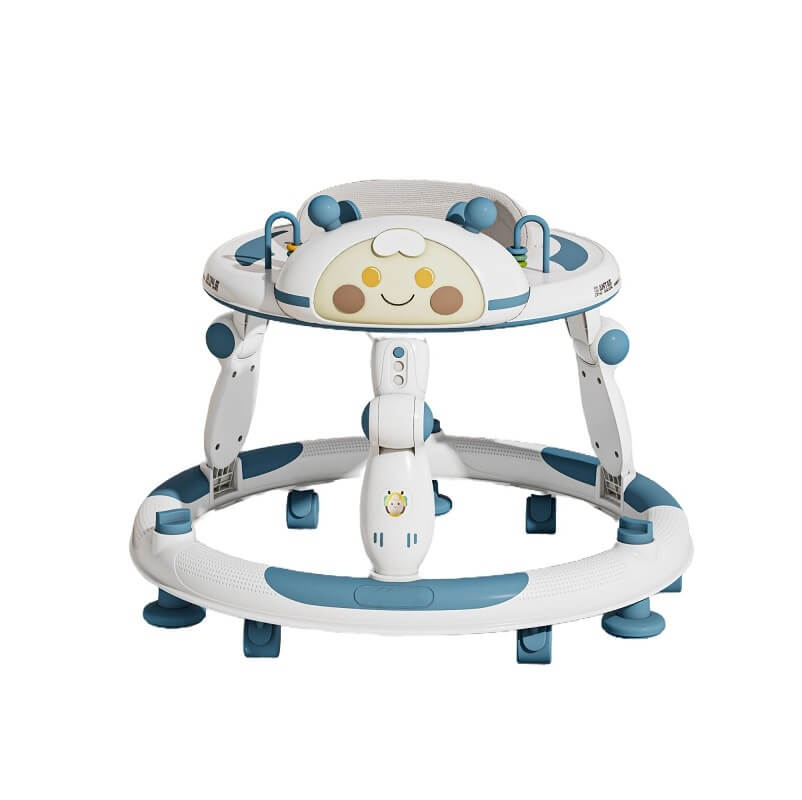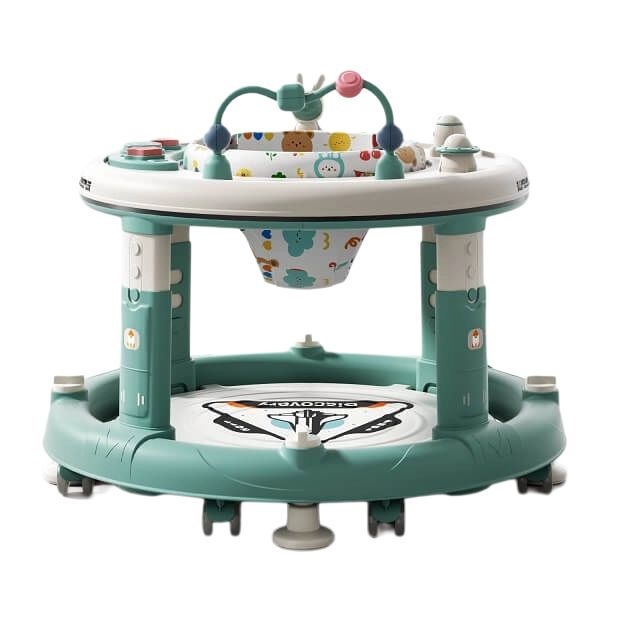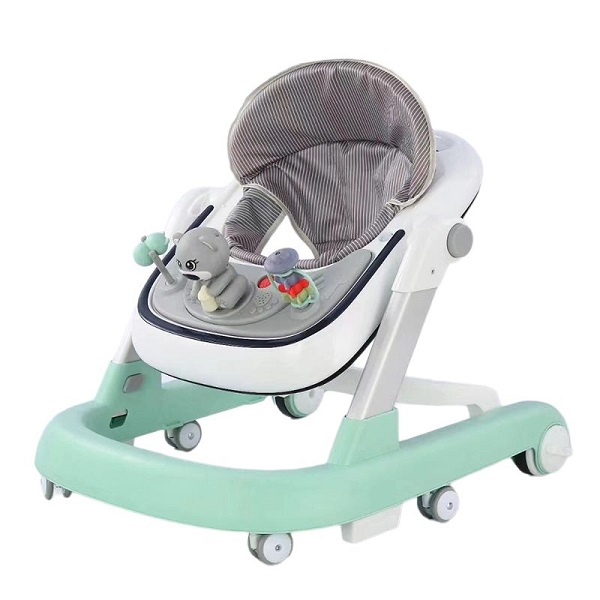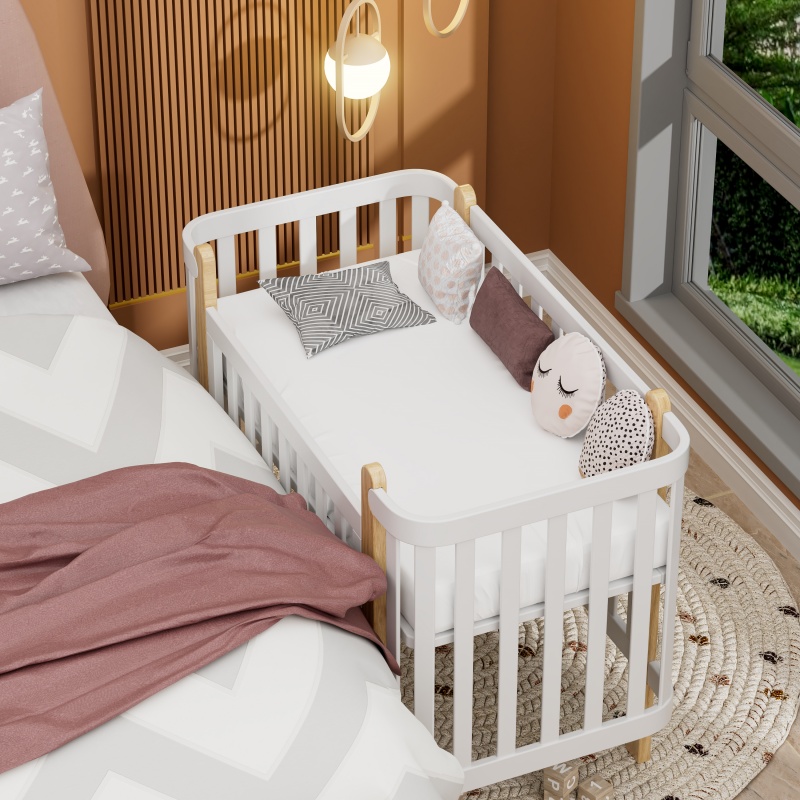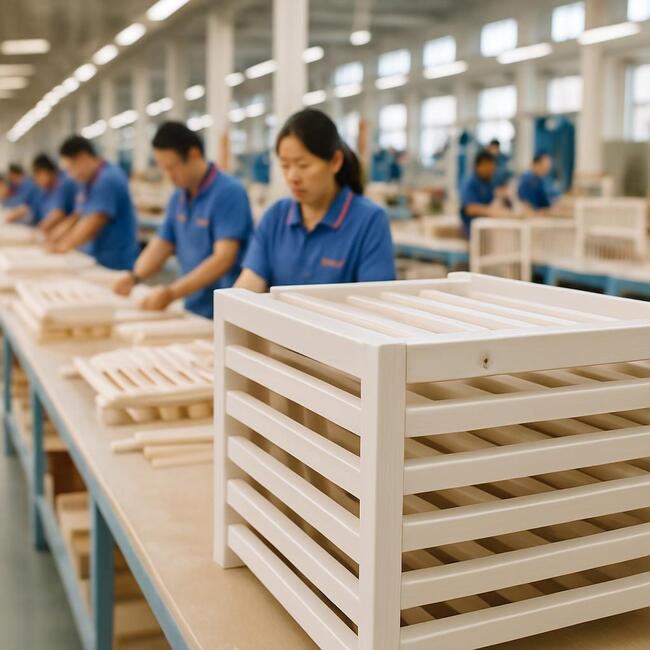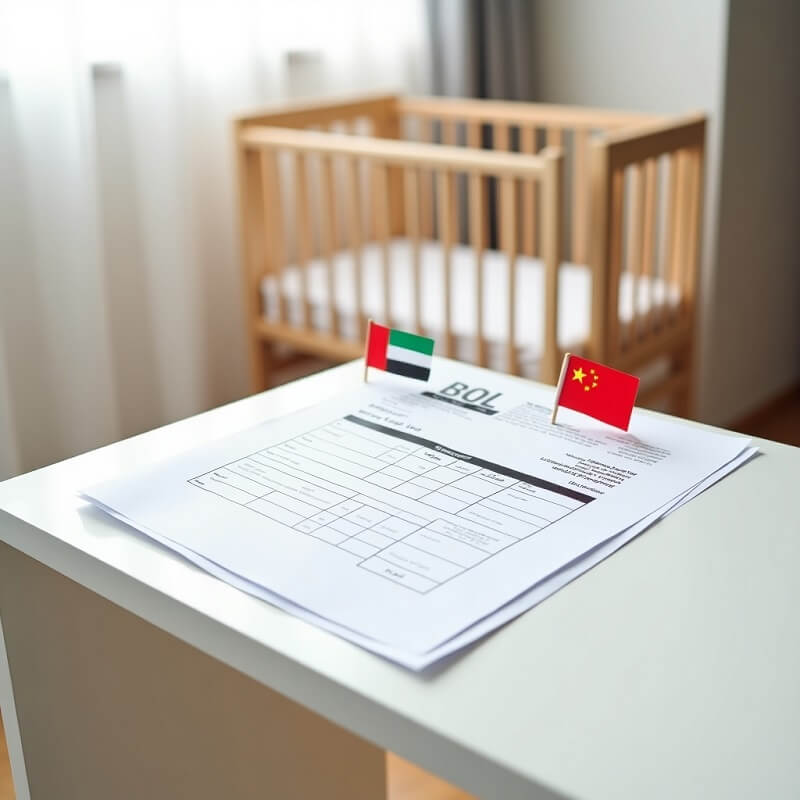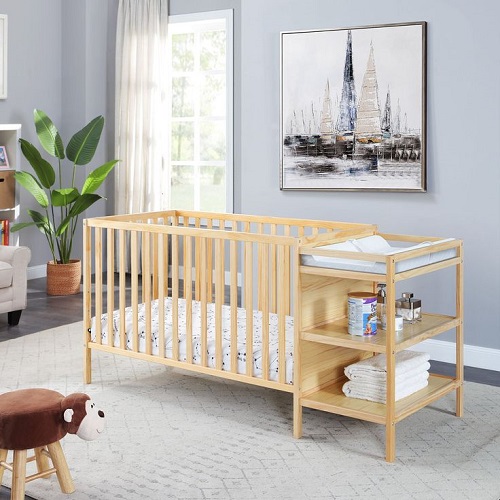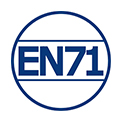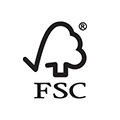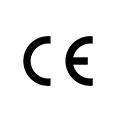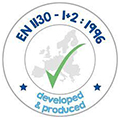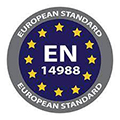The baby walker market has changed significantly in recent years. The consumers are still the same but details such as baby walker designs and child product safety regulations are now very different.
So, if you are a wholesale baby walker retailer or distributor or are planning to enter the market, do settle in. Read on as we break down the market changes, baby walker varieties, sourcing tips, and all the insights you need to succeed. We will also guide you on how to import baby walkers from China or other countries.
Understanding the Baby Walker Market
Different factors influence the outlook and profitability of the baby walker market. Let’s briefly explore each of these vital factors, shall we?
Market Size

Research projections show that the global baby walker market is worth about $1.2 billion as of 2024. North America is currently the largest market in terms of the number of consumers who invest in baby walkers and the amount of money spent on baby walkers. The rest of the market share is distributed across the following regions (in order): Europe, Asia, South America, the Middle East, and Africa.
Growth Projections
Experts forecast that the baby walker industry will grow at a compound annual growth rate (CAGR) of approximately 5-6% until 2030. In figures, this implies that the baby walker industry which is now worth $1.2 billion in 2024, will be worth about $1.5 billion to $1.6 billion in 2030.
Further, consumer data from the Asia Pacific market proves that it is the fastest-growing baby walker market. This high rate of market growth can mainly be attributed to working moms providing more income for families to afford better childcare amenities. Their active lifestyles also necessitate safe and convenient parenting aids like baby walkers.
In addition, access to information and awareness of better lifestyle approaches is encouraging families to invest in baby walkers and similar products to ease child care.
These are positive indicators because when a product market has an upward growth rate, businesses in that niche are more likely to thrive.
Product Segmentation
Research studies differentiate baby walkers based on their features. The most prominent baby walker types include:
Traditional Baby Walkers
Most traditional baby walkers have a design where toddlers can sit or stand in the walker and use it for support as they learn how to walk.
Multifunctional Baby Walkers
Multifunctional baby walkers help toddlers with more than just motor skills. They may have interactive toys that develop coordination or have a screen for entertainment. Most of them also transform into other modes like a rocker, block table, or push toy.
Smart Baby Walkers
Smart baby walkers have integrated tech-driven provisions. For example, the baby walker may self-prompt to play music or light up when a toddler walks to encourage them.
Push Walkers
Push walkers are lightweight but stable. Babies can push them for fun while leaning on them for support. This encourages them to stand and, in turn, walk.
Latest Trends in Baby Walkers
Trends in the baby walker market are often driven either by innovation from manufacturers or consumer preferences. Some of the key trends currently dominating the market include:
Safety Priorities
It is a no-brainer that all parents want safe products for their children. However, the safety concerns when it comes to baby walkers are now more nuanced and detailed than they were before. For example, parents and caregivers now prioritize:
- Baby walkers made using safe and eco-friendly materials such as wood that does not splinter or chew-safe plastic.
- Stable baby walkers with wheels that have traction to prevent slipping.
- Baby walkers with soft rounded edges to prevent injuries.
Convenience
Parents today have more active and adventurous lifestyles than ever. This has led to a rise in demand for baby walkers with convenient features such as:
- Foldability – for easy storage and handling for travel or outdoor trips.
- Convertibility – the option to turn a walker into a rocker or an outdoor toddler stroller is beneficial as parents do not need to tag along or invest in multiple devices.
Baby Development Provisions
Baby walkers initially focused on helping babies develop their motor skills. Lots of baby walker manufacturers have, however, created baby walker designs with interactive play and learning centers/consoles.
The interactive play centers are great at facilitating the development of children’s coordination skills as well as their intellectual abilities. More parents and caregivers are thus favoring baby walkers with such provisions due to the developmental advantages that they can offer.
Style
Modern parents are fast, and in large numbers, embracing stylish baby care products. This includes baby walkers with elegant design features such as beautiful colors, luxurious finishes, and comfortable handling.
Understanding Baby Walker Safety Standards in Different Countries
The safety standards set for baby walkers in your market will determine the types and quality of baby walkers that you can supply. They are thus a vital factor to consider as you develop your business strategy. Here are some highlights of baby walker safety standards from different countries to start you off.
Canada
Canadian health authorities began to notice a rise in baby-walker-related accidents in the early 2000s. They subsequently initiated research studies into the usage and safety of baby walkers.
Later, in 2004, the Canadian government banned the use, sale, resale, importation, and production of baby walkers based on the research findings. However, according to the specifications in the Canada Product Safety Act of 2010, this ban only covers traditional baby walkers. Therefore, you can supply push baby walkers in Canada.
USA
Baby walkers are legal in the USA but they must adhere to the following safety standards:
Stairs Safety: A baby walker should not be able to fall down a flight of stairs no matter the direction it is facing.
Tipping Resistance: A baby walker should be stable enough, with or without the weight of the child, such that it does not tip forward, backwards, or sideways when the child leans in a particular direction.
Safe Occupancy: The design of a baby walker should not have any features that may entrap a child like non-adjustable leg openings.
Weight-bearing: A safe baby walker should be able to hold the weight of a baby when they are still, attempting to walk, or playing.
The European Union and the UK
The EU reviewed its baby walker safety requirements in 2008. The most emphasized regulation is that for a baby walker to pass the EU baby walker safety standards, it has to undergo tests to certify its stability. It should not tip over on stairs, or curbs, or if the baby occupying the walker attempts to reach for objects beyond their reach.
Further, baby walkers should come with documentation that provides clear instructions and warnings to adults about the dangers that they pose to children. Walker documentation should specify age and weight limits for each unit.
Notably, these safety standards also apply in the United Kingdom. This is based on findings by UK medical experts but also partially because the UK was part of the European Union when the laws were reviewed.
How to Wholesale Baby Walkers by Regional Consumer Preferences?
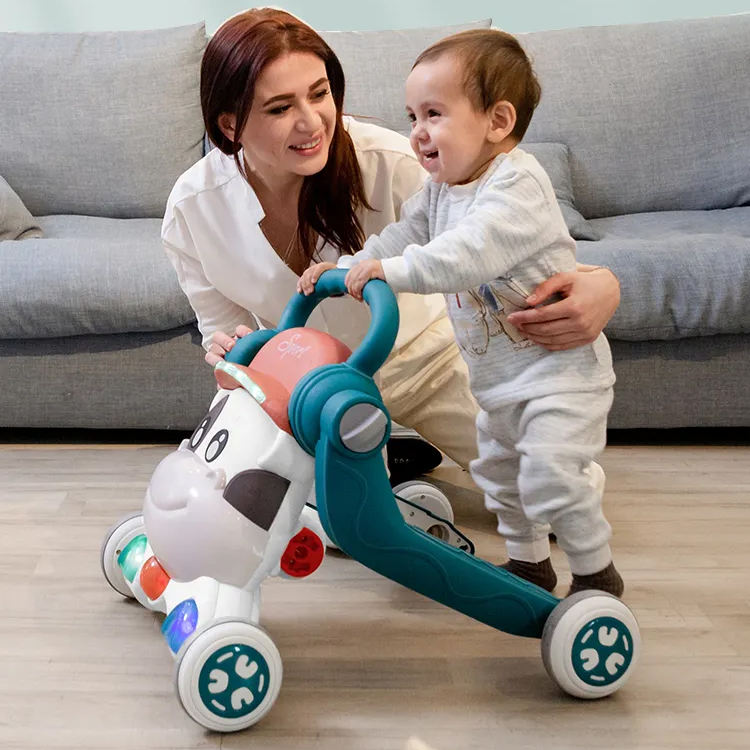
North America
North America comprises Canada and the USA. As we have highlighted above, only push walkers are viable in the Canadian market. This, therefore, restricts you to only supplying wholesale push walkers in that market. The USA baby walker market, on the other hand, is more dynamic. Its most popular baby walkers include: traditional baby walkers, sit-to-stand baby walkers, and push walkers.
Sit-to-stand walkers and push walkers poll ahead of traditional walkers. Parents in the USA are also particularly keen on baby walkers that have smart/tech features for kids’ learning or entertainment.
Europe
Consumers in the European Union, and by extension the rest of Europe, are very conscious when it comes to product safety standards. In recent years, health experts in the region have been highlighting the risks of traditional baby walkers such as falls. Consequently, most European consumers prefer push walkers with interactive play centers to traditional baby walkers.
Asia Pacific
The Asia Pacific market is arguably the most diverse. It comprises both developed and developing countries whose citizens face different socio-economic circumstances. In light of this, it would be best to analyze specific country markets and identify which baby walkers may be ideal for them.
Still, it is essential to mention that countries like Singapore, New Zealand, and Australia have been at the forefront of advocating for baby walker safety. Their safety recommendations endorse push walkers over traditional baby walkers. Given the gravitas of these countries in the region, most Asia Pacific countries are likely to align with these safety requirements.
Subsequently, it is advisable to consider supplying push walkers or sit-to-stand walkers as they are likely to be the more viable option in this market going forward. It may equally be profitable to offer both stylish luxury and affordable baby walker models.
The Middle East and Africa
Different research studies all endorse the Middle East and Africa as growing baby walker markets. Consumer preferences are largely still fluid and the safety requirements are not yet as solid as those of other regions.
Nevertheless, some sample studies indicate growing safety concerns among consumers. Access to diverse baby walker designs is also a key challenge in the market. It may thus be offer some safe traditional baby walker options while also introducing push baby walkers to consumers in these regions. At the same time, strive to make baby walkers easily available to buyers in your target market by exploring options such as online stores with a wide delivery network.
How to Choose Baby Walker Manufacturers?
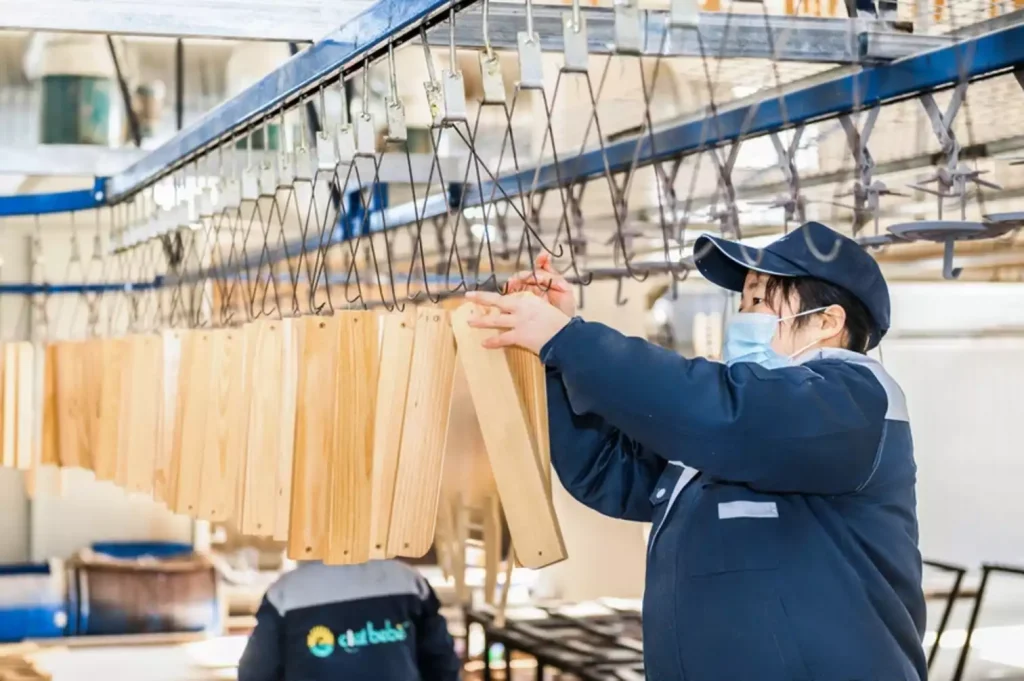
Looking for Manufacturer Channels
Here are some ways to help you find a manufacturer with a good reputation.
| Channel | Overview |
| Manufacturer Websites | An online search of baby walker manufacturers can help you to discover individual manufacturer websites. Explore their product offerings and company details. Reach out with questions. |
| B2B Marketplaces | B2B marketplaces like Alibaba or Made-in-China list numerous baby walker suppliers. You can select potential manufacturers based on high ratings and order samples for evaluation. |
| Referrals | Referrals from business networks can help you find good baby walker manufacturers. It can be an effective method if you trust the referee or can see proof of how a specific manufacturer has served them. |
| Trade Fairs | Attending trade fairs, like the Canton Fair, where baby walker manufacturers showcase allows you to evaluate their products and negotiate terms in detail and in person. |
Evaluating the Strengths of a Manufacturer in Various Aspects
1. Verify Manufacturer Certifications and Compliance
A credible baby walker manufacturer should have the requisite business licenses and certifications of their country. It is further ideal for them to have product safety certifications from independent health or baby product regulatory authorities, and compliance certificates for at least one or more regions.
Request these documents and confirm them with the relevant authorities as part of your due diligence. It will assure you that any baby walkers that you source from that manufacturer meet proper quality standards.
2. Inquire About Manufacturers’ Factories and Production Capabilities
A baby walker manufacturer only qualifies as such if they own and run a well-equipped factory. They should be willing to divulge the location of their factory and allow you to visit if you wish. Be sure to verify these details by visiting or through videos, local inquiries, or business authorities. Aim for high manufacturing standards, quality production equipment, expert staff, and high production capabilities too.
3. Interrogate their Experience and Expertise
Baby walker manufacturers with more experience may be advantageous to work with; their honed skills and understanding of the product and the market assure you of better service. A good way to explore this is to ask questions about the baby walker market, design details, safety standards, or customization options. An experienced manufacturer will provide detailed and knowledgeable answers or have department heads that you can consult.
4. Consider the Range of Baby Walker Options
A wider range of baby walker options provides more options for you to offer to your customers. It is thus beneficial to choose a baby walker manufacturer that offers a wide selection of baby walker types and designs.
10 Questions You Must Ask Your Baby Walker Manufacturer
1. What type of baby walkers do you produce?
2. Which baby walker safety standards do you adhere to?
3. Which safety certifications have you obtained for the baby walkers that you manufacture?
4. Do you provide baby walker customization services?
5. What is the minimum order quantity(MOQ)?
6. What are the wholesale prices for different baby walkers?
7. What is the turnaround time for baby walker orders?
8. Do you perform quality inspections? Can I request third-party quality inspections through agents or other representatives?
9. What are the payment terms?
10. What is your return policy on defective baby walkers or baby walker accessories?
Which Baby Walker Manufacturers Are Reliable?
The baby walker industry is vast and filled with hundreds of baby walker manufacturers. The tough task lies in finding top-tier manufacturers that you can rely on to supply you with quality walkers. Here is a brief review of top baby walker manufacturers worth considering.
| Manufacturer | Location | Products Offered | Overview |
| Clafbebe | Anhui, China | Baby walkers Bunk beds Baby high chairs Bassinets | Clafbebe is an ideal brand if you need a quality manufacturer with undeniable experience(20yrs). This Chinese baby walker supplier is run by expert staff ensuring quick turnaround times and impeccable baby walker quality. |
| Joovy | Dallas, USA | Infant baby walkers Baby high chairs Playards Multifunction strollers | Joovy is a go-to brand for parents seeking baby walkers with a balance of style and functionality. It offers adequate variety and uses quality materials. |
| Chicco | Lombardy, Italy | baby walkers Baby travel systems Car seats Strollers | Chicco caters to both high end and budget consumers. Its baby walkers feature safety features like anti-slip foot pads and braking provisions. |
| Baby Trend | California, USA | Baby walkers Playards Car seats Baby travel system | Baby Trend balances quality and affordability. Its walkers are renowned for their colorful designs and unique traction wheels that can roll backwards and forwards. |
| Vtech Kids | Beaverton, Oregon | Baby walkers Baby monitors Baby soothers Kids’ activity desks | Vtech Kids manufactures push baby walkers with interactive and smart play consoles. The brand is keen on toddler skill development. |
How to Import Baby Walkers from Other Countries?
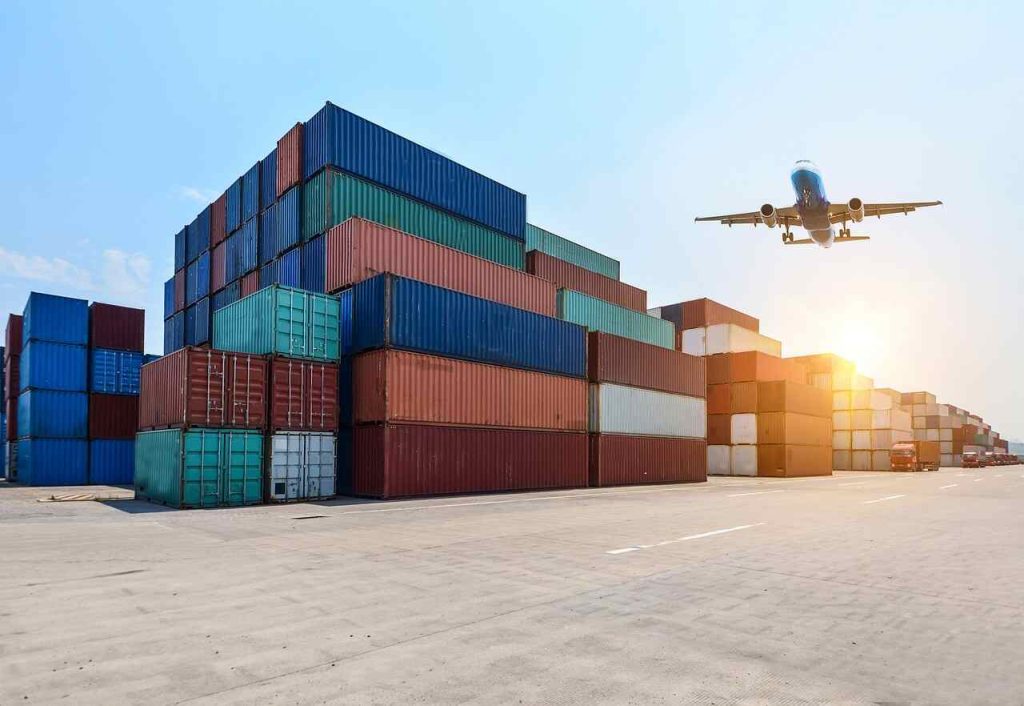
Step 1: Understand Import Regulations
Begin by learning the baby walker import regulations in your country so that you understand the: Permissions and limitations, taxation policies, and required documents (e.g. Import permits, inspection documents, etc.)
Step 2: Obtain the Necessary Licenses and Permits
Confirm whether you require any special licenses and permits to import baby walkers. Obtain them if there are or move to the next step if you do not need any.
Step 3: Arrange Payment
Suppliers mostly release goods for shipping once payment is complete. It can be through a bank transfer, an escrow payment system, a letter of credit, or trade credit, among other options. Strive to organize timely payment through the method that you agreed upon with the manufacturer.
Step 4: Arrange Shipping and Logistics
Hire a Freight Forwarder: Choose and hire a freight forwarder who will handle the shipping of your goods once the manufacturer releases them for delivery. They should find you a suitable carrier, book space, provide the necessary documentation, and oversee all transportation details.
Shipping Terms: Discuss and agree on shipping incoterms. They outline your responsibilities and shipping liabilities versus those of the seller and freight forwarder.
Step 5: Secure the Necessary Documentation
Most importation documents come from your manufacturer and your shipping agent if you choose to use one. They include:
A commercial invoice: It indicates the goods, their quantity, their value, their weight, and the terms of sale.
A packing list: An itemized list of all the goods in the import package.
A bill of lading: A shipping document that confirms the receipt of the goods by the carrier and outlines shipping details.
A certificate of origin: This form formally declares where the products you are importing have come from. It is provided by the manufacturer and has to be validated by trade or export authorities in that country.
An import declaration: This is a form that you fill out stating the type and nature of goods you are importing as well as their value.
Step 6: Customs Clearance
Present the necessary documents at your local customs office when your imported baby walkers arrive. The customs officials will inspect the goods, direct you on any payments you need to make, and clear your goods as stipulated by law.
Step 7: Receive and Distribute Goods
Organize last-mile delivery of your goods from the port to your warehouse. Unpack and sort them accordingly. Check for any flaws before distributing them to your retail customers or wholesale baby walker outlets.
Step 8: Record Keeping and Reporting
Keep detailed online and physical records of your import transactions and customs clearances. They are essential for audits, accounting, and other accountability processes.
Conclusion
The baby walker market is changing but now has even more enormous potential for profitability. More so with innovations like multifunctional push walkers which more parents are embracing as safer options to support healthy child development.
So, what’s the winning strategy for you as a supplier? First, identify the specific baby walker needs of your target market just like we have explored in this blog. Then, find a dependable manufacturer that can seamlessly supply you with quality baby walkers to meet those needs.
Let Clafbebe Help You Consolidate the Baby Walker Market!
Clafbebe is a China baby walker manufacturer that is experienced and trustworthy! We are also excellent in product design and can produce baby walkers that are most attractive to contemporary parents.
Clafbebe maintains close cooperative relations with overseas wholesalers and retailers, exporting baby walkers manufactured strictly in accordance with international standards to many countries and regions, and the export volume increases year by year.
We are keen to use our strong factories, equipment, and expert team to help you build your personal brand. Contact Clafbebe now to get solutions!

